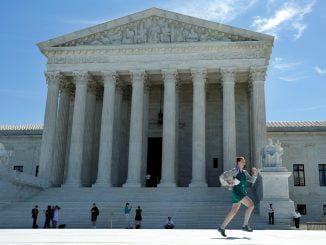
The choice of who will replace Justice Ruth Bader Ginsburg is a crucial one, as you’ve probably heard.
You’ve also probably heard why: A spot on the Supreme Court is “a lifetime appointment” and will affect the balance of the court “for decades to come.”
The fact that Ginsburg kept her seat well into her 80s, through battles with cancer, until she died in office, underscores the stereotype of a Supreme Court appointment. It’s generally believed that justices hold onto their spot on the court like… well, like government jobs; once they’re in, there’s no getting them out.
Looking at the history of the court, both recent and going back to its start, shows a different picture, however. It may surprise the people wringing their hands in print and on air, but it turns out that the judges chosen for the highest court in the land are honorable and show good judgment when it comes to knowing when it is time to leave the court.
Let’s look at the second talking point first: A new justice will impact the court “for decades to come.” How many decades? Based on the average tenure of a Supreme Court justice, it’s about two — sometimes higher, sometimes lower.
Going back to the start of the court, the average tenure of a justice is 16.9 years. That number has fluctuated over time. Justices seated in the early 1800s were on the court for 20.6 years. That fell to 15.0 years by the early 1900s. Lately, the tenures have been trending up. Justices seated since 1950 have spent an average of 22.1 years on the court, and that’s moved up to 26.6 years since 1970.
Twenty-six years is a fairly long time. So, assuming those trends continue, there appears to be some validity to the concern. So, let’s look at the first talking point: It’s “a lifetime appointment.”
It may surprise people wringing their hands in print and on the air, but it turns out that the judges chosen for the highest court in the land are honorable and show good judgment.
It turns out Ginsburg is in a minority. Of the 108 Supreme Court appointments who left office, 51 have died in office. The vast majority of the other 57 chose to retire, with a handful resigning from office for a variety of reasons.
Most of the justices who died in office died prematurely. The average life span of a justice who died in office is 69.4 years. More have died in their 40s or 50s (seven) than have died in their 80s (five).
The last three justices to die in office — Rehnquist, Scalia and Ginsburg — were all in their 80s, which would appear to be evidence that the court is taking the “lifetime appointment” more literally as time goes by. However, just the opposite is the case. Eighty percent of the justices appointed in the early 1800s died in office. That fell to 68% by the late 1800s, 32% by the early 1900s. Of the last 19 justices to leave office, just three have died in office, which is just under 16 percent.
A third concern often raised, or at least hinted at, is that justices are loyal to the president who appointed them. Since fewer justices are dying in office, they can choose when they leave, making it tough to break a liberal or conservative majority once it’s established.
It turns out, judges don’t play politics. We’ve seen that from Chief Justice Roberts’ move toward the left since Kavanaugh’s appointment gave the conservatives a majority. We also see it from the justices who have resigned. Of the 16 Supreme Court justices who chose when to retire since 1950, seven have done so during the administration of a president of the party opposite of the one that appointed them, in effect “flipping” their seat. Only three of the 16 retired during the first year of a new presidential administration, which one would expect if they were holding on until after the election in the hopes of being replaced by a different chief executive.
While the idea of a rogue court running roughshod over the values your party holds dear is a good way to get donations, nearly 250 years of history shows that the US Supreme Court has been a level-headed bunch who exhibits good judgment about when it is their time to leave.




